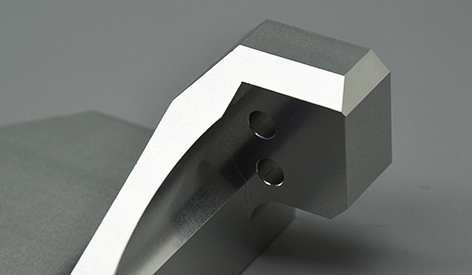ㆍPrivacy: We respect your privacy. Here you can find an example of a non-disclosure agreement. By submitting this form, you agree to our terms & conditions and privacy policy.
Views: 3 Author: Site Editor Publish Time: 2024-04-25 Origin: Site









1. Material Selection for Custom Stainless Steel Parts
Choosing the right stainless steel grade is crucial for custom parts. Grades like 304 offer good corrosion resistance and ease of fabrication, while 316 provides enhanced corrosion resistance in harsh environments. For high-strength applications, 17-4 PH stainless steel is preferred. Material selection impacts not only the part's performance but also its machinability and cost-effectiveness.
2. Design Precision and Accuracy
Accurate design specifications are paramount for custom stainless steel parts. This includes defining tolerances, surface finish requirements, and geometric complexity. CAD software plays a crucial role in creating precise designs, ensuring that every detail meets the desired specifications. Design precision directly influences the part's functionality, aesthetics, and manufacturability.
3. CNC Machining Techniques for Stainless Steel Parts
CNC machining is the preferred method for producing custom stainless steel parts due to its accuracy and versatility. Techniques such as milling, turning, and EDM Electrical Discharge Machining) are commonly used. CNC machines can achieve tight tolerances and complex geometries with high repeatability, ensuring consistent quality across production batches.
4. Surface Treatment for Stainless Steel Parts
Surface treatment is essential for enhancing the performance and aesthetics of stainless steel parts. Common treatments include passivation to improve corrosion resistance, polishing for a smooth finish, and coatings like powder coating or plating for added protection. Proper surface treatment not only improves the part's appearance but also extends its lifespan in demanding applications.
5. Dimensional Accuracy in Stainless Steel Machining
Maintaining dimensional accuracy is critical for custom stainless steel parts. Precision machining and strict adherence to tolerances ensure that parts fit together seamlessly and function as intended. Advanced measuring tools like calipers, micrometers, and CMM Coordinate Measuring Machine) are used to verify dimensional accuracy and validate part quality.
6. Tooling and Fixture Design for Stainless Steel Parts
Well-designed tooling and fixtures are essential for efficient and accurate machining of stainless steel parts. Proper fixture design holds the workpiece securely in place during machining, reducing vibrations and minimizing errors. High-quality cutting tools and toolpaths are selected to optimize performance and achieve desired surface finishes.
7. Quality Assurance Processes for Stainless Steel Parts
Implementing robust quality assurance processes is crucial for ensuring the quality of custom stainless steel parts. This includes inspections at various stages of production, such as first article inspections FAIs), in-process inspections, and final inspections. Testing methods like dimensional checks, surface roughness measurements, and material analysis are used to verify part quality.
8. Machine Calibration and Maintenance
Regular calibration of CNC machines is essential to maintain accuracy and consistency in machining custom stainless steel parts. Calibration ensures that machines are operating within specified tolerances and are capable of producing parts to the required dimensions. Calibration intervals are determined based on machine usage, environmental factors, and industry standards.
9. Operator Skills and Training
Skilled operators play a critical role in ensuring the accuracy and quality of custom stainless steel parts. Operators should have expertise in CNC machining techniques, programming, tool selection, and problem-solving. Continuous training and skill development programs are implemented to enhance operator proficiency and optimize production processes.
10. Supplier Collaboration and Material Sourcing
Collaboration with reputable suppliers is key to obtaining high-quality materials and services for custom stainless steel parts. Clear communication channels, well-defined specifications, and regular feedback mechanisms are essential for successful collaboration. Working closely with suppliers helps address challenges, optimize processes, and deliver superior parts to customers.

